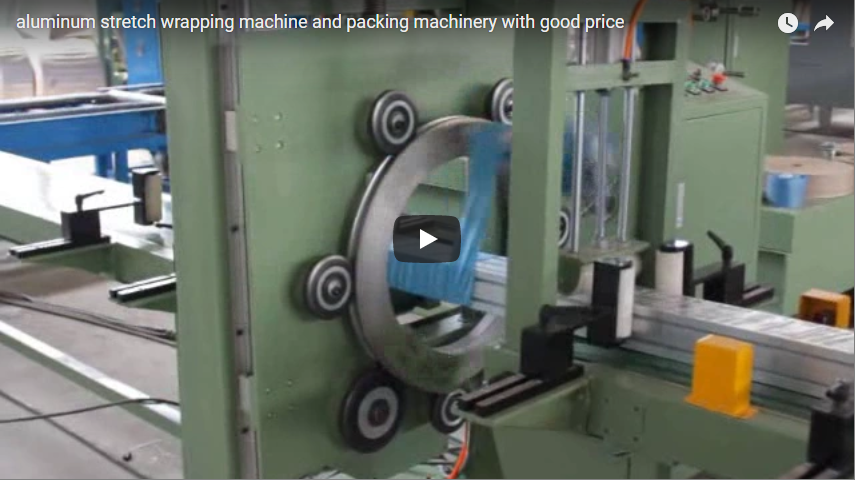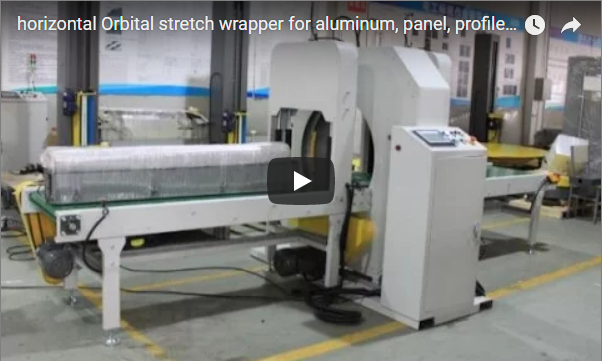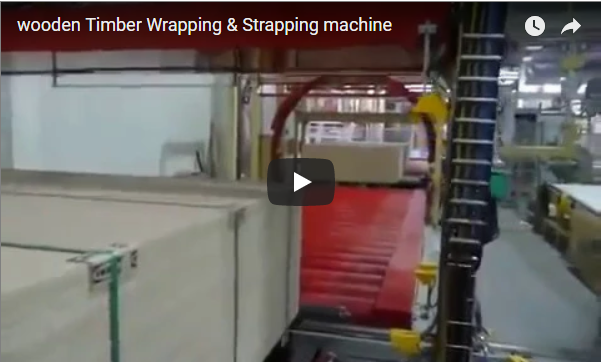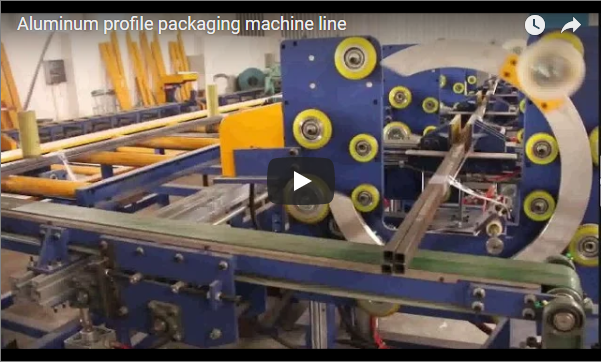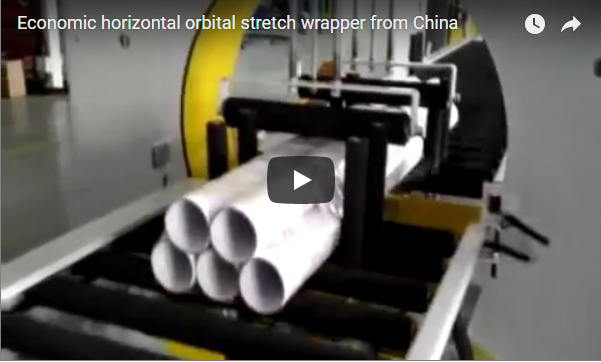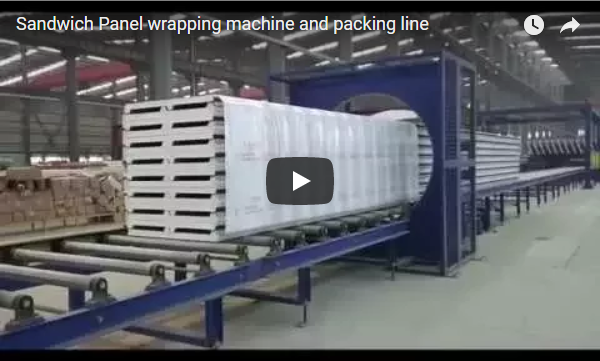Optimizing Roll Packaging: A Closer Look at Automatic Horizontal Wrapping Machines
Manual packaging of large, bulky items like carpet rolls, textiles, nonwovens, or other materials can be a significant bottleneck in many production and distribution environments. It's often labor-intensive, time-consuming, and can lead to inconsistent wrap quality, potentially compromising product protection during transit and storage. Automatic roll packing machines, particularly horizontal wrappers, offer a robust solution to these challenges.
(Video demonstrating the automatic roll packing machine in action)
1. Understanding the Core Technology: How Horizontal Roll Wrappers Work
Unlike vertical wrapping systems, horizontal packing machines are specifically engineered to handle elongated products like rolls. Here's a breakdown of the typical operational flow and key components:
- Infeed System: Rolls are typically fed into the machine via a powered conveyor or manually placed onto V-shaped rollers. Sensors detect the presence and position of the roll to initiate the cycle.
- Wrapping Station: This is the heart of the machine. The roll is conveyed or rotated through a wrapping ring or arm that dispenses stretch film (or sometimes other materials like paper or bubble wrap). In many designs, this involves an orbital wrapping process where the film carriage revolves around the stationary or slowly rotating roll, ensuring complete coverage.
- Film Carriage & Pre-stretch: Modern machines often feature powered pre-stretch carriages. These units stretch the film before it's applied to the roll (often achieving 200-300% stretch). This optimizes film usage, reduces material costs, and provides superior load containment compared to simply tensioning the film as it's applied.
- Clamping, Cutting, and Sealing: Once the wrapping cycle is complete, an automated mechanism clamps the film, cuts it cleanly, and often uses a heat sealer or wiping arm to secure the film tail to the roll, preventing unraveling.
- Outfeed System: The fully wrapped roll is then transported out of the machine via another conveyor, ready for labeling, palletizing, or direct shipment.
- Control System: Typically managed by a Programmable Logic Controller (PLC) with a Human-Machine Interface (HMI) touch screen. This allows operators to easily set parameters like the number of wraps, film overlap, tension settings, and diagnose potential issues.
2. Key Features and Advantages Driving Efficiency
Investing in an automatic roll packing machine delivers tangible benefits on the shop floor:
- Significant Labor Reduction: Automating the wrapping process frees up personnel previously dedicated to manual packing, allowing them to be reassigned to more value-added tasks. This directly addresses labor shortages and reduces operational costs.
- Increased Throughput: These machines operate at consistent, high speeds, capable of wrapping far more rolls per hour than manual methods, eliminating packaging bottlenecks.
- Enhanced Product Protection: Consistent film application and tension ensure rolls are tightly secured, protecting them from dust, moisture, dirt, and damage during handling and shipping. The uniform wrap prevents layers from shifting or telescoping.
- Optimized Material Usage: Powered pre-stretch systems significantly reduce the amount of film consumed per roll compared to manual wrapping, leading to direct cost savings and improved sustainability.
- Improved Load Integrity & Safety: Properly wrapped rolls are more stable and safer to handle, stack, and transport, reducing the risk of accidents or product damage.
- Professional Package Appearance: A consistently wrapped product presents a more professional image to customers.
3. Technical Specifications Overview (Typical Ranges)
While specifications vary based on the model and customization, here are common parameters for automatic roll and carpet packing machines:
- Max. Roll Diameter: 300mm - 1500mm (or larger for custom builds)
- Max. Roll Length: 1200mm - 6000mm+
- Max. Roll Weight: 50kg - 2000kg+
- Wrapping Material: LLDPE Stretch Film (standard), potentially Kraft Paper, Bubble Wrap
- Film Roll Width: Typically 500mm (20 inches)
- Film Roll Outer Diameter: ~250mm
- Control System: PLC (e.g., Siemens, Allen-Bradley, Mitsubishi) with HMI Touch Screen
- Power Supply: 380V/50Hz/3Ph or customized to local standards
- Compressed Air Requirement: Typically 0.5-0.7 Mpa
4. Real-World Application & Operational Insights
From our experience working with clients across various industries (textiles, flooring, nonwovens, plastics, paper), the transition to automated roll wrapping yields immediate results. Operators often comment on the ease of use after initial setup and training. Routine maintenance typically involves simple tasks like changing film rolls, cleaning sensors, and periodic lubrication, ensuring high uptime.
A common challenge these machines solve is inconsistency. Manual wrapping results vary significantly between operators and even from the beginning to the end of a shift. Automation eliminates this variability, ensuring every roll meets the same packaging standard. For businesses handling high volumes, the return on investment (ROI) is often realized quickly through labor savings, reduced film costs, and minimized product damage claims.
5. Choosing the Right Configuration
Selecting the appropriate machine involves considering:
- Product Dimensions & Weight: Ensure the machine's capacity matches your roll sizes.
- Required Throughput: Match the machine speed to your production output.
- Level of Automation: Consider integration with existing conveyor lines or robotic handling.
- Wrapping Material: Confirm compatibility if using materials other than standard stretch film.
- Budget and Space: Factor in the initial investment and footprint requirements.
Conclusion
Automatic horizontal roll packing machines are indispensable assets for manufacturers and distributors dealing with rolled goods. They offer a powerful combination of speed, efficiency, consistency, and product protection that manual methods simply cannot match. By automating this critical end-of-line process, businesses can significantly reduce operating costs, improve throughput, enhance product quality, and gain a competitive edge.
For specific requirements or to discuss how an automated solution can fit your operations:
info@fhopepack.com
Explore related automated bagging solutions:
https://www.fhopepack.com/autobag.html

